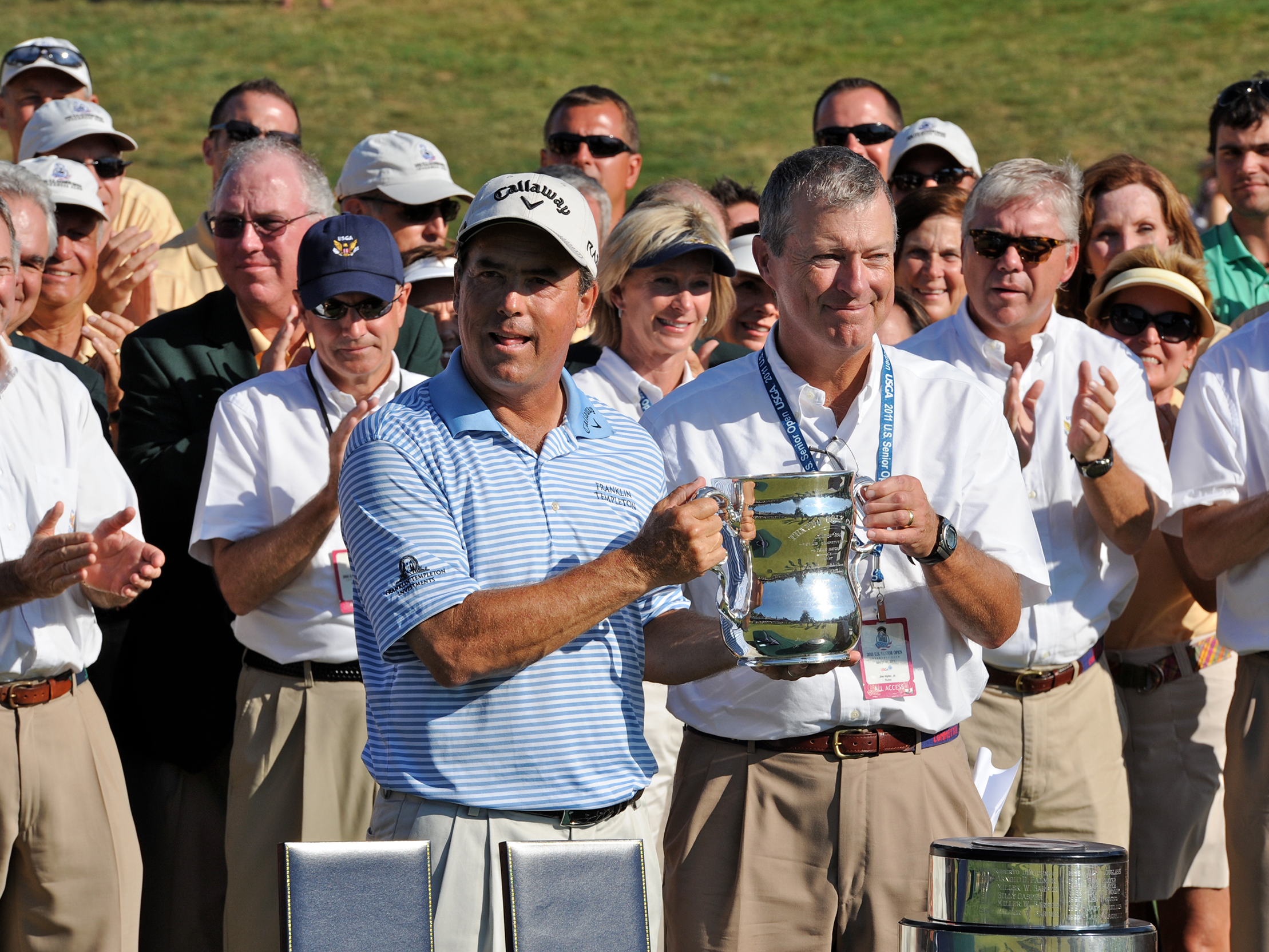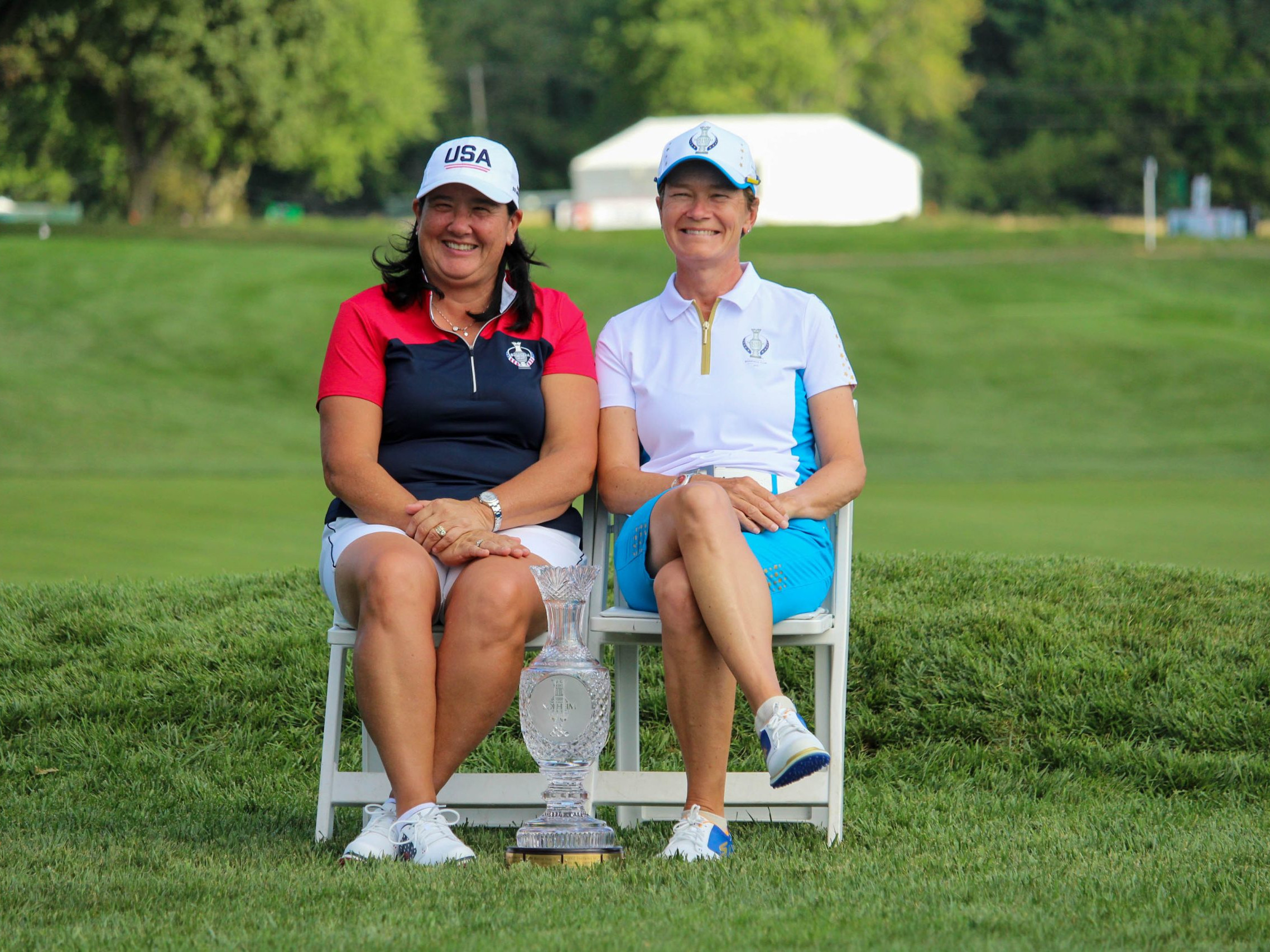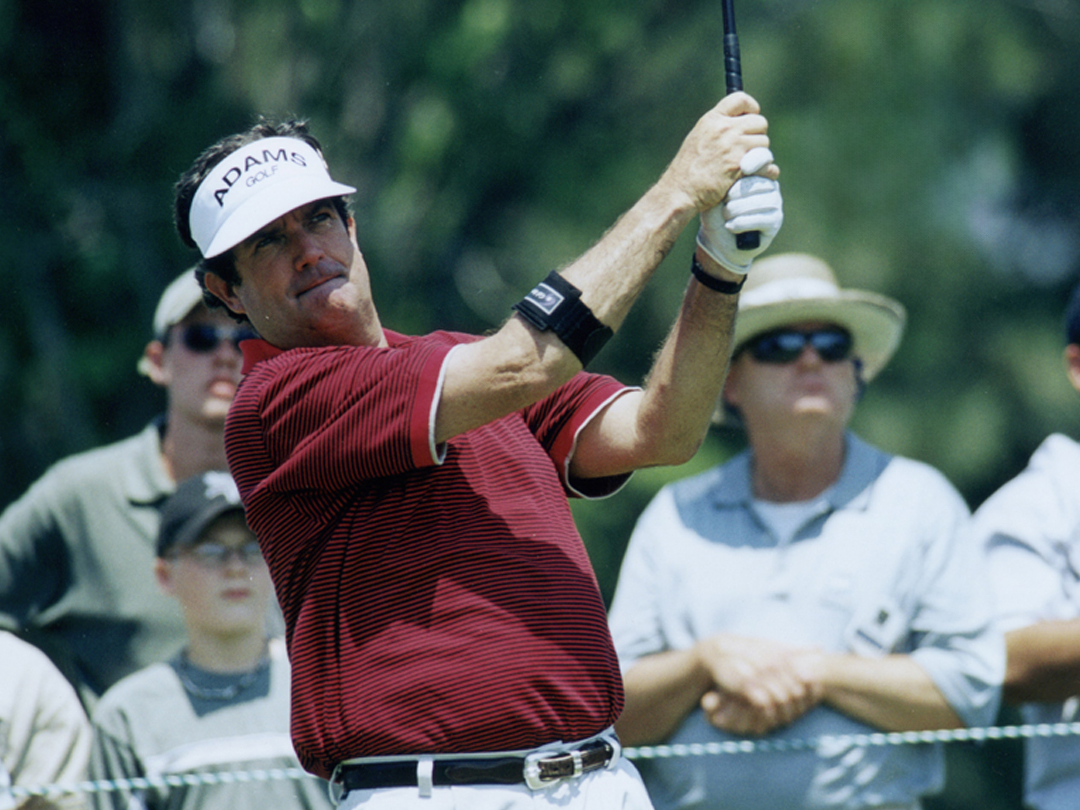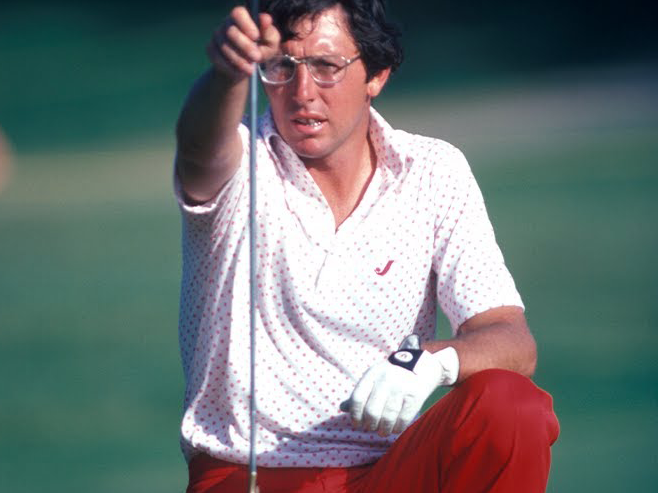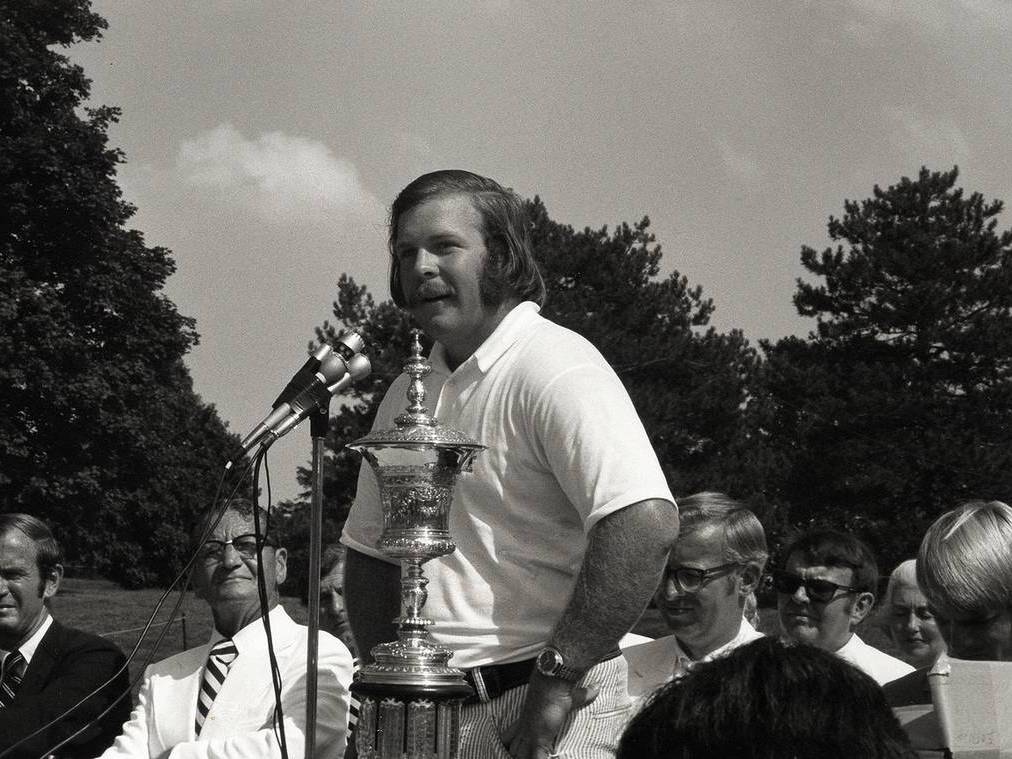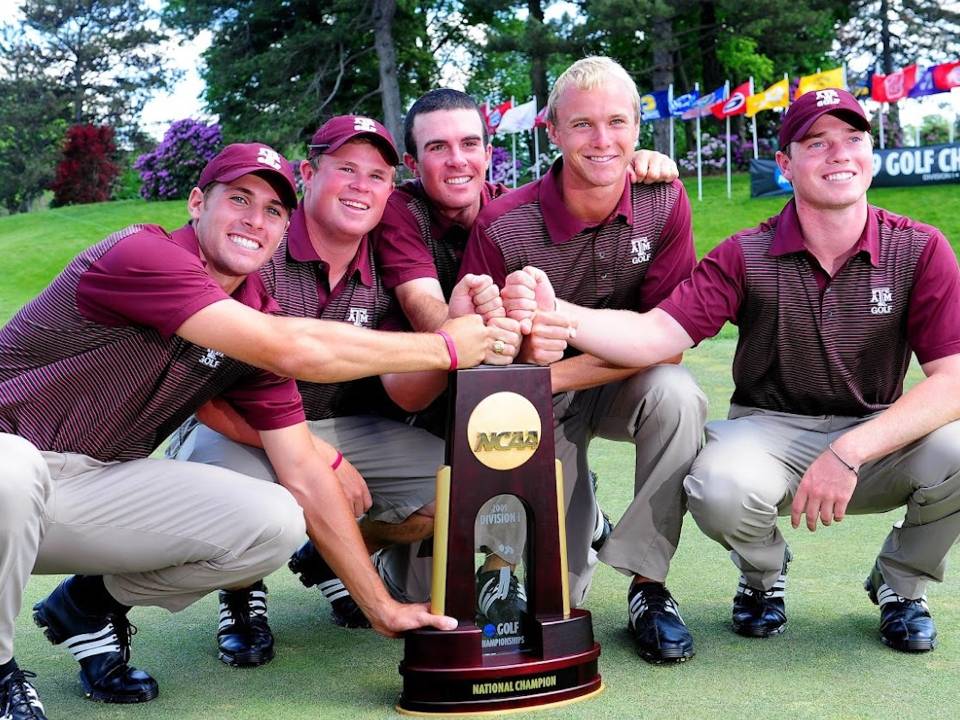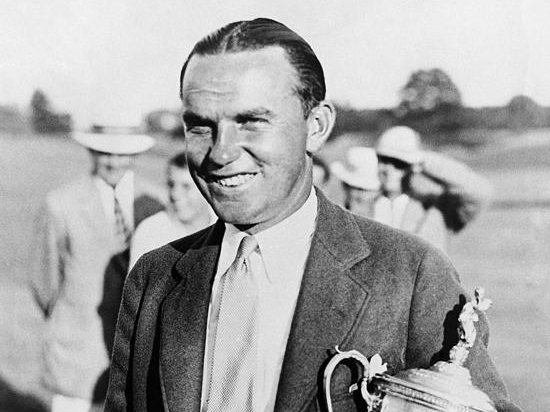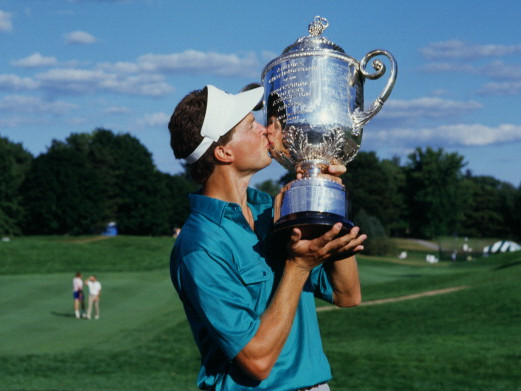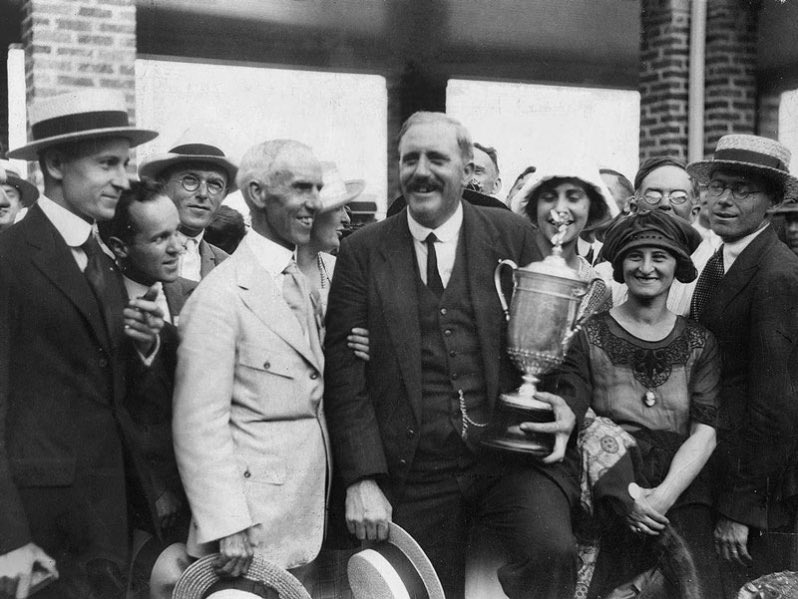1944
NCAA Championship
Played in late June 1944, the NCAA Championship came to Inverness Club just three weeks after Allied Forces launched Operation Overlord. Over 160,000 troops landed on the beaches of Normandy, and thousands perished in bloody fighting that would mark the beginning of the end of World War II.
As it did in every part of our lives, the war effort also took its toll on golf and the NCAA Championship in particular.
The defending team champion was Yale University, which had won an incredible 21 titles (out of a total of 46 championships) from 1897 to 1943. But travel restrictions forced the Bulldogs to stay at home. Yale never won another title.
Other teams and players were similarly affected. A field of around 50 players entered the event, and most were from the Midwest. Because of the uncertainty with travel plans, entries were accepted on the tee for the first round. Teams from Kent State, Minnesota, Michigan State, North Carolina, Ohio State, Northwestern and Notre Dame were entered; Big Ten champion Michigan was the pre-tournament favorite.
Players were forced to play with old or refurbished golf balls. The war effort restricted the use of rubber, and no new golf balls had been manufactured in over two years. Synthetic balls were still years away.
The Inverness course would be a stern test for the collegians. The Donald Ross design had previously proved its mettle, hosting the 1920 and 1931 U.S. Open Championships.
The team championship saw the Fighting Irish of Notre Dame pull an upset for the team title when Bob Terry made a par at the last hole. Notre Dame’s 311 total was one better than the University of Minnesota; Michigan was third at 318, followed by Ohio State (327) and Michigan State (344). Jimmy Jackson of Washington University in St. Louis took medalist honors with a two-over-par 73. Notre Dame, coached by the legendary Father George Holderith, would celebrate its only national championship in golf after six top-four finishes in the preceding 13 years.
Match play began on Monday afternoon, with temperatures rising into the 90s. The euphoria for the Irish faded quickly, as only two of their 5 qualifiers (John Fitzpatrick and Tom Hanlon) survived the first round. Most of the top players advanced: medalist Jimmy Jackson; the Big Ten champion, Johnny Jenswold; Robert Seyler of North Carolina; and Arnold Page, a Toledo native playing for Cornell.
The defending men’s champion was Wallace Ulrich of Carleton College in Minnesota. In 1944, he was an aviation student in the 2612 AAF Base Unit at the University of Toledo. He qualified for match play, but couldn’t play on due to his classroom duties.
Tuesday saw a continuation of the high temperatures, and some exciting golf. Jackson beat Notre Dame’s Fitzpatrick in the morning round 2 & 1. But he ran into a red-hot Louis Lick, a 20-year-old medical student from the University of Minnesota, in the afternoon. Lick had beaten Notre Dame’s Hanlon in the morning 8 & 7, and then needed only 13 holes in drubbing Jackson 6 & 5. Lick was 3-under par for the holes he played against Jackson.
Jenswold had an easier run, beating teammate Paul O’Hara 5 & 3 in the morning, and defeating James Harris of Northwestern University 8 & 6 in the afternoon. Seyler and Page both suffered second round losses.
Wednesday saw the semi-finals and finals played in blistering heat, with temperatures topping off at 98 degrees. Louis Lick continued his stellar play in the morning with a 6 & 5 victory over Tom Messinger of Michigan. Johnny Jenswold beat Henry Ramplet of Baldwin-Wallace, a surprise semi-finalist, 3 & 1.
The finals provided some of the best drama of the tournament. Lick raced out to a 3-hole lead with only four holes to play. But Jenswold, playing for Michigan while studying as a naval trainee, won 15 and 16. The players halved 17, and a half at 18 was enough to give Lick a 1-up victory. Lick’s total was 76, while Jenswold shot 77.



